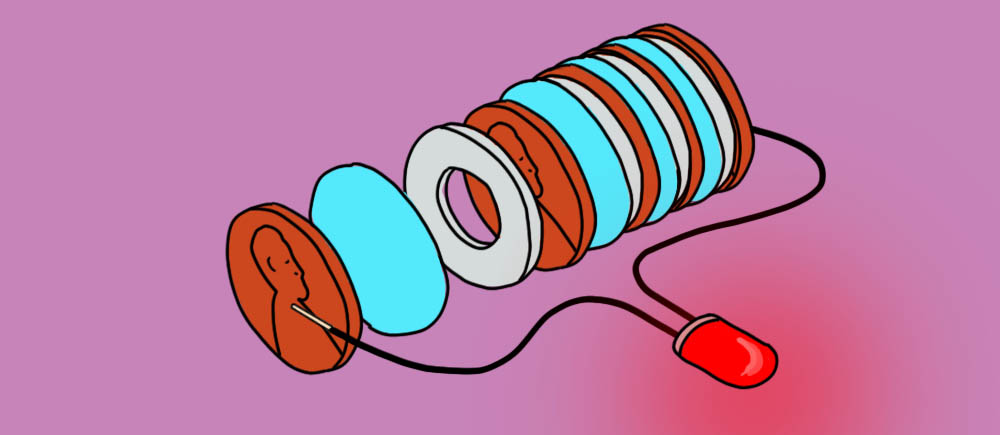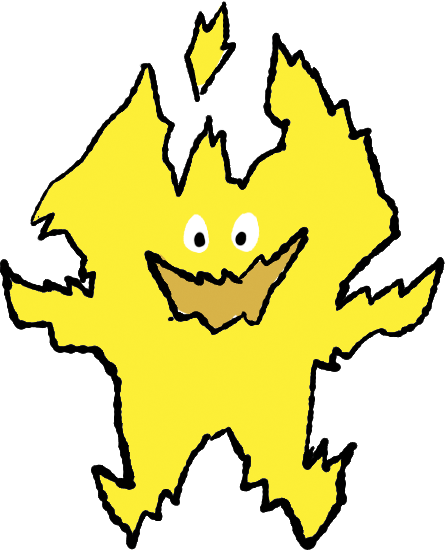

Make a Battery With Coins!
You can make your own battery with a few simple products.
Materials
You learned that electricity is a flow of electrically charged particles, called electrons. There are many ways to generate electricity.
One thing that can produce electricity is a battery!
A battery is an object that stores energy as chemical energy and releases it as electric energy. Chemical reactions in a battery create an electric current. Electric currents from batteries can power many devices, from tiny portable electronics to large automobiles!
You can make your own battery with a few simple products. Give it a try and generate your own electricity!
What you need:
- 5 copper coins (U.S. pennies are good, but you can use any coin as long as it is made of copper)
- 5 zinc washers (can be found at a hardware or DIY store)
- A small LED light with wires (You can find this at a craft or hobby store, a hardware store, or an electrical shop).
- Some paper towels
- Scissors
- White vinegar (about 1 cup)
- Table salt – a few teaspoons
- Small mixing bowl
- Electrical tape (also found at a hardware or DIY store)
Directions
Start constructing your battery by dissolving a couple of teaspoons of table salt in one cup of white vinegar in a mixing bowl. Set this liquid aside.
Use a pair of scissors to cut several small discs (circles) from a sheet of paper towel. You want them to be about the size of the pennies or washers. You can use a penny or washer as a guide for your cutting.
Quickly dip each paper towel disc into the solution of salt and vinegar. You want the paper towel discs to be wet, but not so much that they are dripping or falling apart.
Now it’s time to construct your battery. Start with a copper penny. Place one disc of wet paper towel on top of the penny. Then place a zinc washer on top of that.
Repeat this several times (five or six is fine). Finish your battery with a copper penny on the end. Both ends should have a copper penny. You can use electrical tape to hold the stack together.
Now, take the small LED light. Hold one wire against the penny on one end of your battery. Hold the other wire on the opposite end. It should look like this (see illustration below):

Did the LED light up? You generated the electricity to light the LED bulb with your chemical battery!
So what happened?
An electric current consists of tiny particles called electrons. A battery works by separating electrons from atoms in the battery’s material and “pushing” them into an electric circuit.
When two different metals are connected by an electrolyte, a chemical reaction occurs at each metal surface that either releases or takes up electrons. The solution of vinegar and salt is an electrolyte—a solution that conducts electricity. The copper and zinc are called electrodes. They release and take up electrons.
When these electrodes are connected by a wire, electrons will move from one surface to the other, creating an electric current. The electric current supplies the energy to light up the LED.